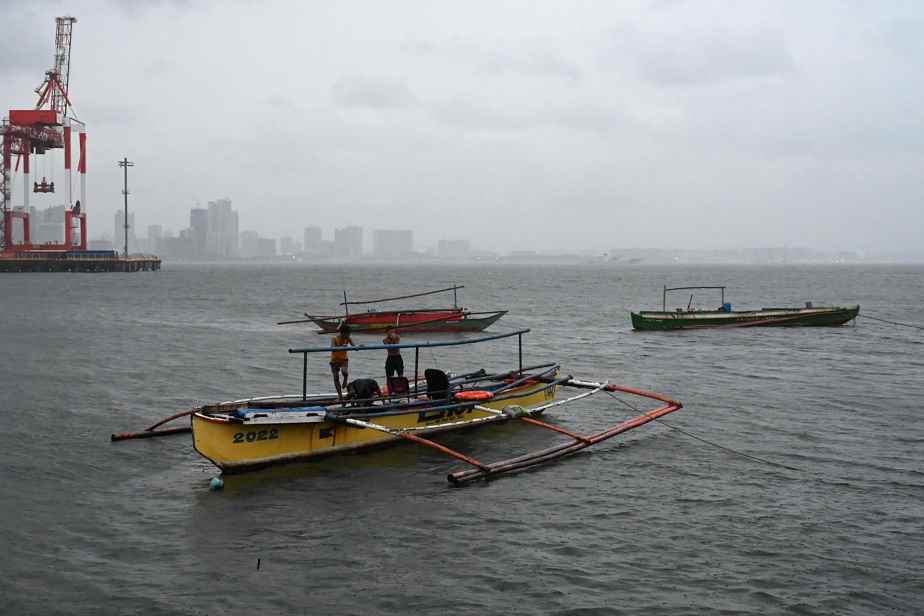(Manila) Super Typhoon noru began hitting the Philippines on Sunday, raising fears of flooding and crop destruction, and prompting hundreds of people to evacuate their homes.
Posted at 9:20 a.m.
The super typhoon began to inflict strong winds and heavy rains on the heavily populated main island of Luzon in the afternoon.
According to the Philippine Meteorological Service, noru made landfall at 5:30 p.m. local time in the municipality of Burdeos on the Polillo Islands, which are part of the province of Quezon.
Accompanied by winds of 195 km/h, norucalled Karding in the Philippines, is the most powerful typhoon recorded this year in the country. It strengthened with “unprecedented” rapidity according to the National Weather Service.
“We are asking residents of endangered areas to obey calls to evacuate when necessary,” said Philippine Police Chief General Rodolfo Azurin.
The Philippines is hit by about 20 typhoons each year, a phenomenon that tends to worsen due to climate change, according to scientists. Nine months ago, another super-typhoon killed more than 400 people in the center and south of the country.
A typhoon is called a “super-typhoon” when its winds exceed a certain speed, the threshold varying according to the national meteorological services (in the Philippines, this threshold is 185 km/h).
The speed of the winds accompanying noru increased by 90 km / h in just 24 hours, an “unprecedented” intensification, estimated the weather forecaster Robb Gile.

PHOTO JAM STA ROSA, AGENCE FRANCE-PRESSE
A man protects himself from the weather as he approaches noru at Baseco in the Philippines on Sunday.
“Explosive escalation”
“Typhoons are like engines, they need fuel and an exhaust to run,” Gile said.
According to him, noru “has good fuel because it has plenty of warm waters along its path, and it has good exhaust in the upper layers of the atmosphere. It’s a recipe for explosive escalation.”
According to the meteorological service, the wind speed could reach 205 km / h when the super-typhoon, born in the Pacific Ocean, arrives on dry land.
The service warned of flooding, landslides and strong waves in the affected areas. Schools will remain closed on Monday and maritime traffic has been suspended.
In Manila, emergency services were preparing for heavy rain and high winds in the city of more than 13 million people.
“The Capital Region is ready. We are just waiting, and we hope not to be affected,” said Romulo Cabantac, regional director of civil defense.
Dozens of flights to or from the Philippine capital were suspended on Monday.

PHOTO KEVIN TRISTAN ESPIRITU, AGENCE FRANCE-PRESSE
The government is preparing to welcome potential victims at a basketball court in Marikina City on Sunday
In Quezon province, residents of several villages have been evacuated, said Mel Avenilla, an official with the local disaster prevention office.
In neighboring Aurora province, residents of Dingalan municipality have also been sent to shelters.
“People who live near the coast have been told to evacuate. We live far from the coast so we stayed. We are more worried about the water coming from the mountains,” said Rhea Tan, 54, a restaurateur in Dingalan.
Mme Tan said residents were taking advantage of the still calm weather to secure their house roofs and transport boats to higher ground.
“We are even more concerned if the weather is very calm, as it is often the beginnings of a powerful typhoon before it makes landfall,” she added.
The typhoon is expected to weaken as it passes over the island of Luzon, before moving away into the South China Sea on Monday towards Vietnam.
